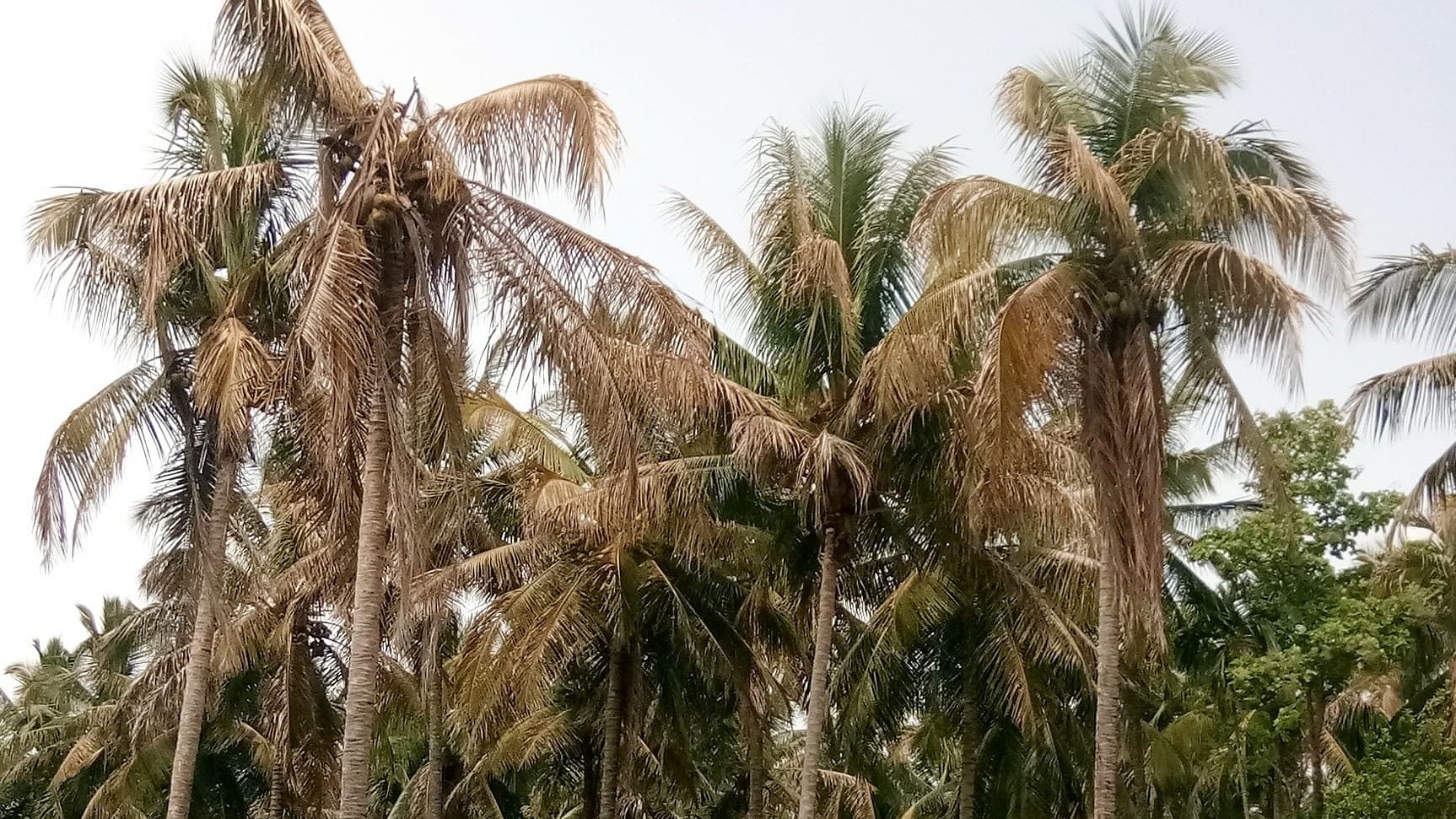
The disease has proved a double whammy for farmers, who have struggled to recover the capital after prices of ball copra fell last year.
Image for representation.
Credit: DH File Photo
Bengaluru: Farmers in the coconut belt of Tumakuru district have been reporting a pest or disease affecting thousands of trees.
Some coconut growers in Gauribidanur, Tiptur and other taluks say the disease bears a striking resemblance to leaf blight disease or ‘Pestalotiopsis palmarum fungus,’ which had affected trees 10 years ago. Others say the trees were affected by black-headed caterpillar.
Nagaraju, a farmer in Gubbi taluk, explains that in his 5 acres of land, 115 trees have been affected by the disease.
One hundred trees are generally planted in one acre. “The trees are leaking amber-black sap. Some trees were affected in summer this year. The disease is now spreading fast. I have tried everything from putting salt to applying pesticides. Nothing seems to be working,” he said.
Another farmer said fronds in the disease-hit tree start wilting and the tree looks like it has been burnt.
“The disease spreads from one farm to the other. Two weeks ago, government officials did visit and they told us that the trees were affected by the black-headed caterpillar,” he said.
The disease has proved a double whammy for farmers, who have struggled to recover the capital after prices of ball copra fell last year.
“Prices for copra dropped from Rs 14,000 per quintal to Rs 7,500-Rs 8,000, while we spend Rs 9,000 for an yield of one quintal,” the farmer said.
“We had drought for almost two years. This weakened the trees,” Nagaraju said.
A study by the agricultural development and rural transformation centre in 2016, when the leaf blight disease last struck, showed that 68% of coconut growers were affected by pests and disease to their trees, 3% by tatipaka, 36% by thanjaw wilt, 9% by bud rot, 48% by lethal yellowing (48%) and 24% by ‘nusi roga’.
B S Bhagyalakshmi, senior assistant director of horticulture in Kunigal, said the black-headed caterpillar had been detected in several affected trees.
“The bottom fronds of the coconut tree are infected first, then the pests move to the upper fronds. Only 2 to 3 fronds appear green, the rest of the tree looks scorched,” she said.
Horticulture officials have recommended the use of farmer-friendly aphid Goniozus nephantidis.
Using 20 to 30 aphids per tree about five times every 15 days, the population of black-headed caterpillars can be controlled. In case of heavy infestation, the department has recommended the use of a biological insecticide.
Department officials did not comment on the possibility of leaf blight disease.